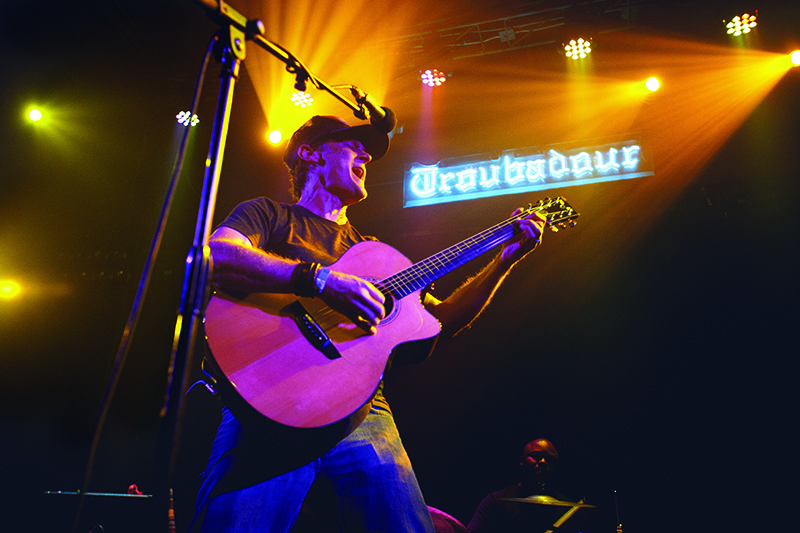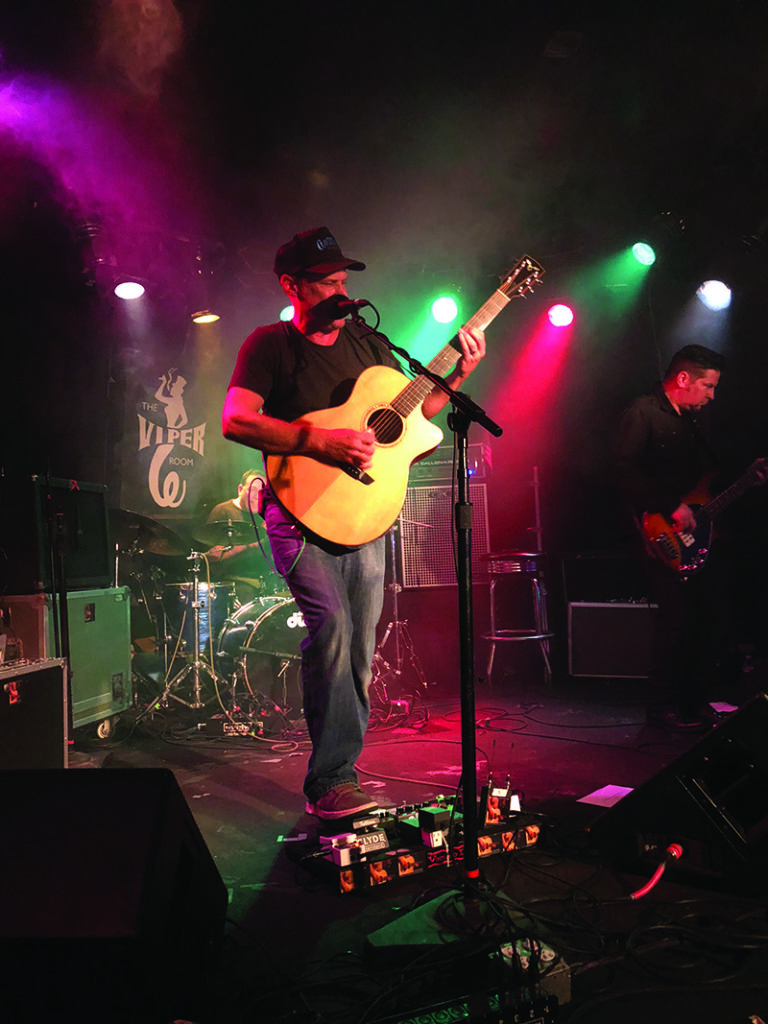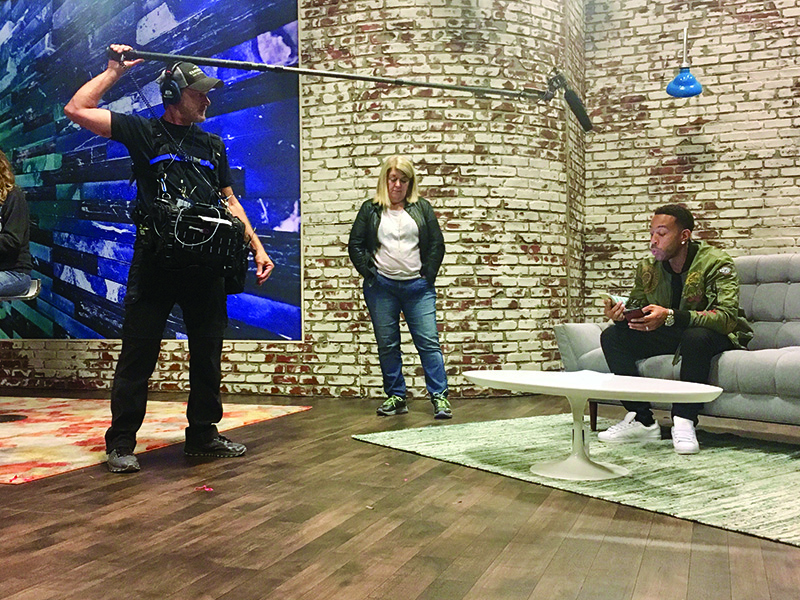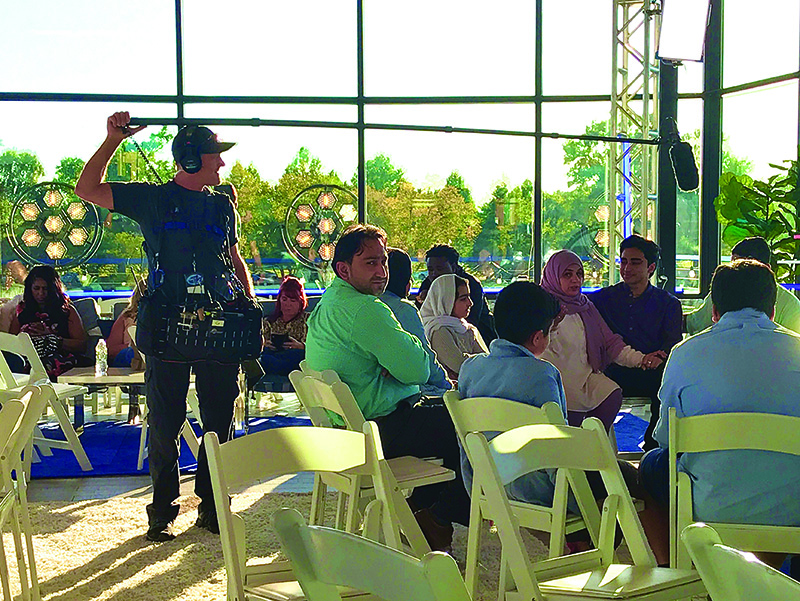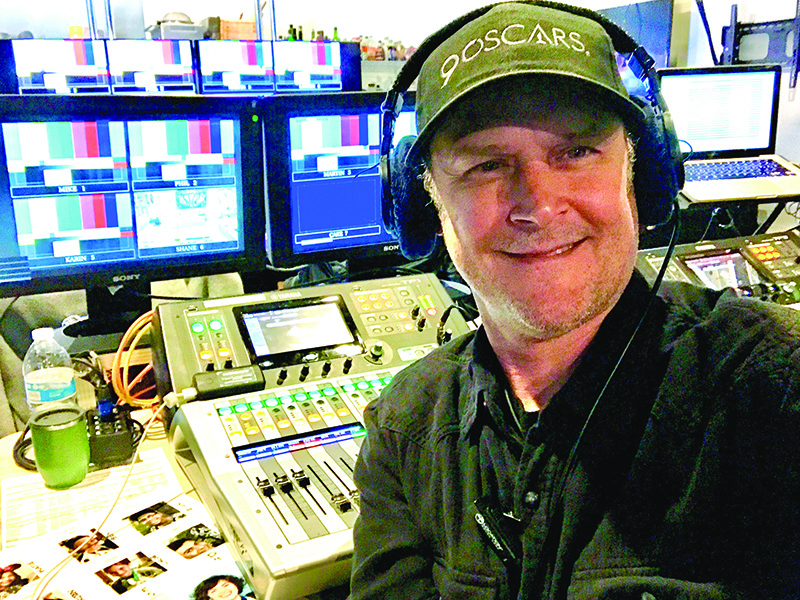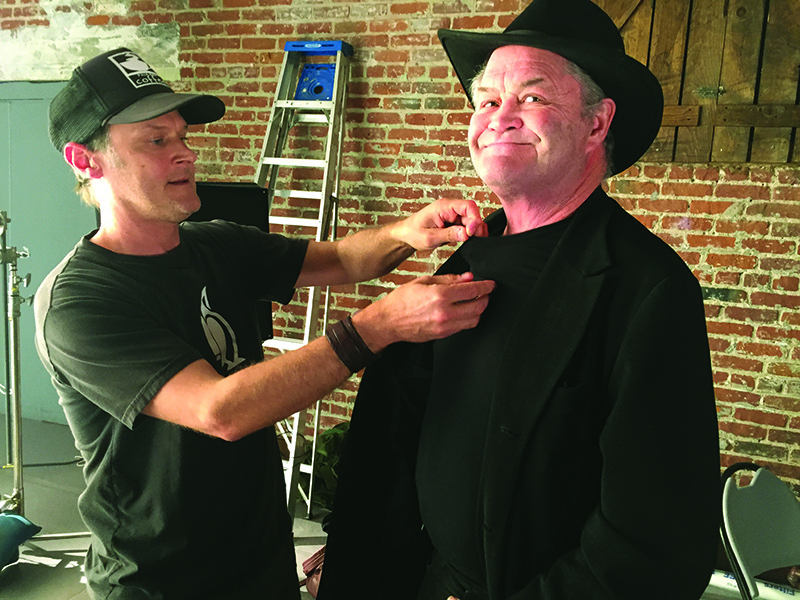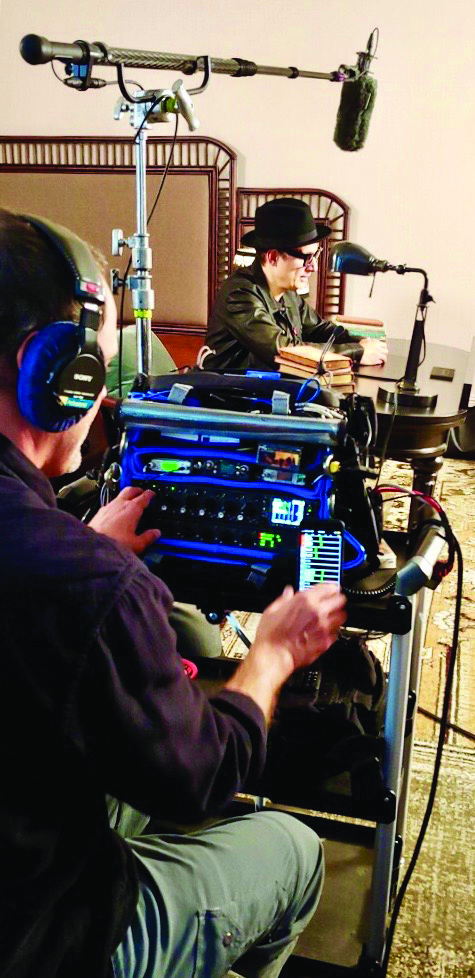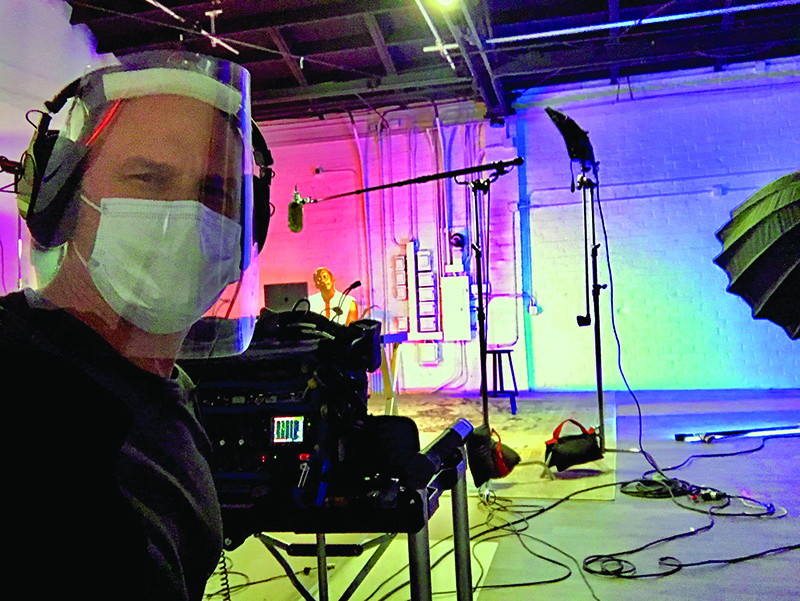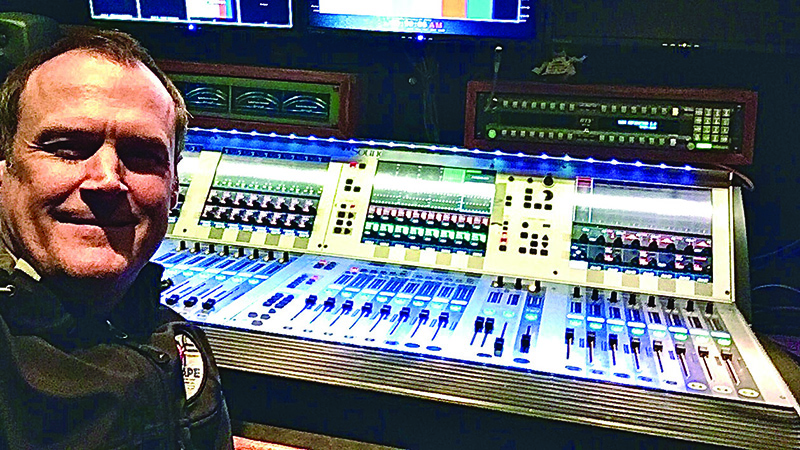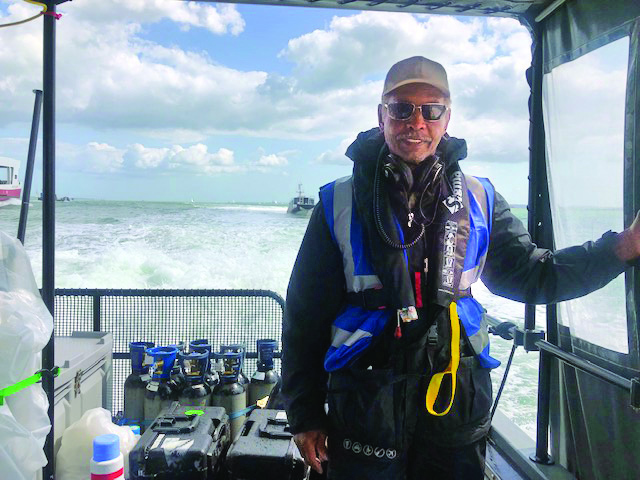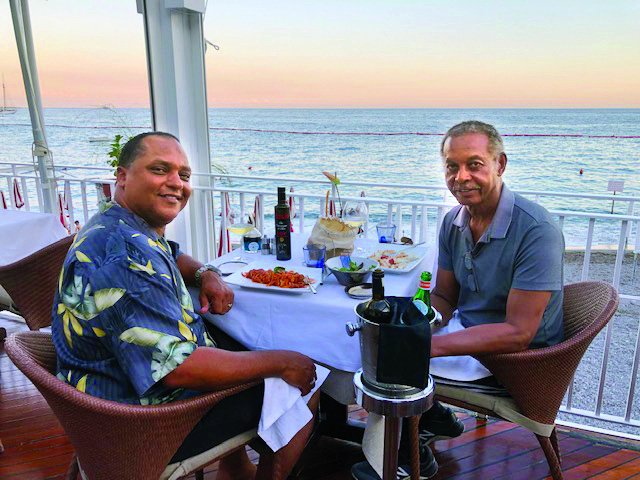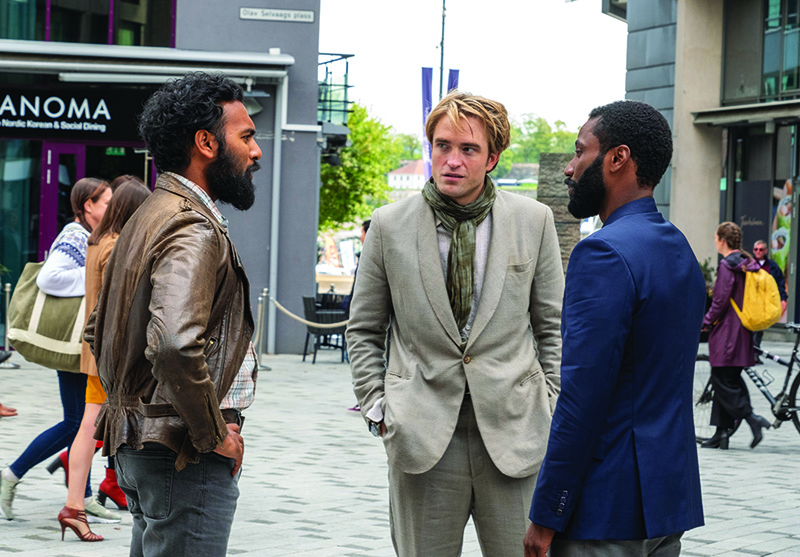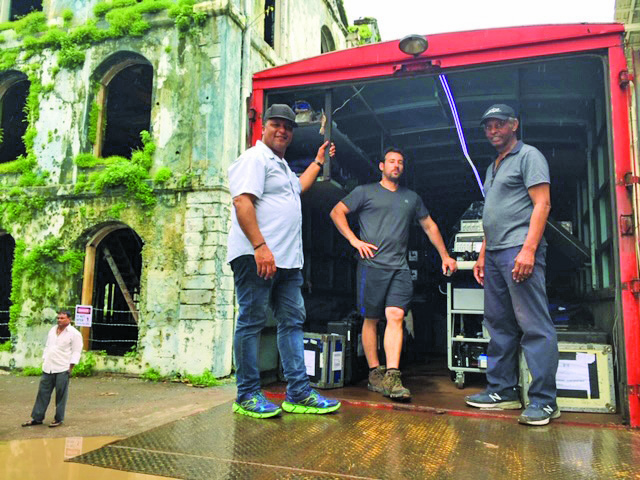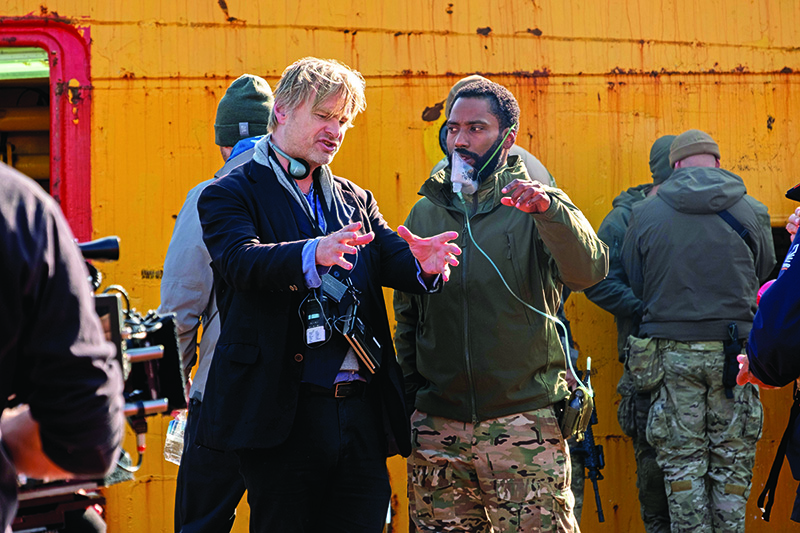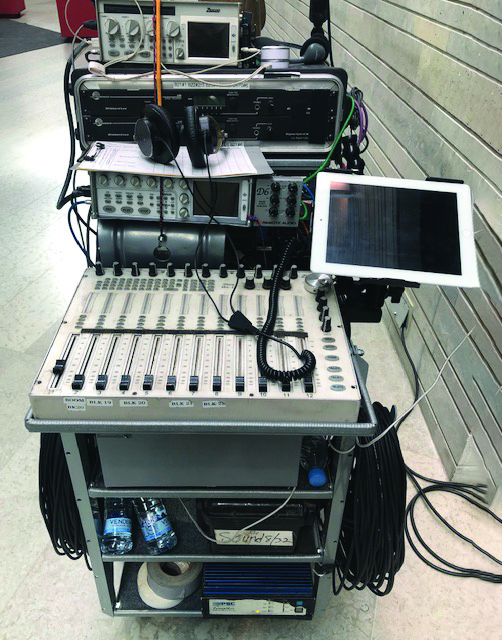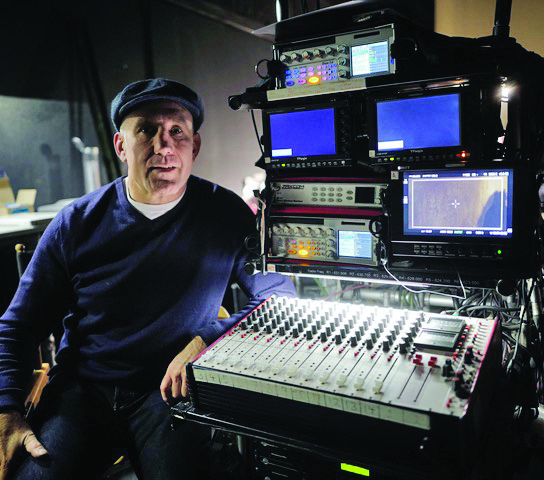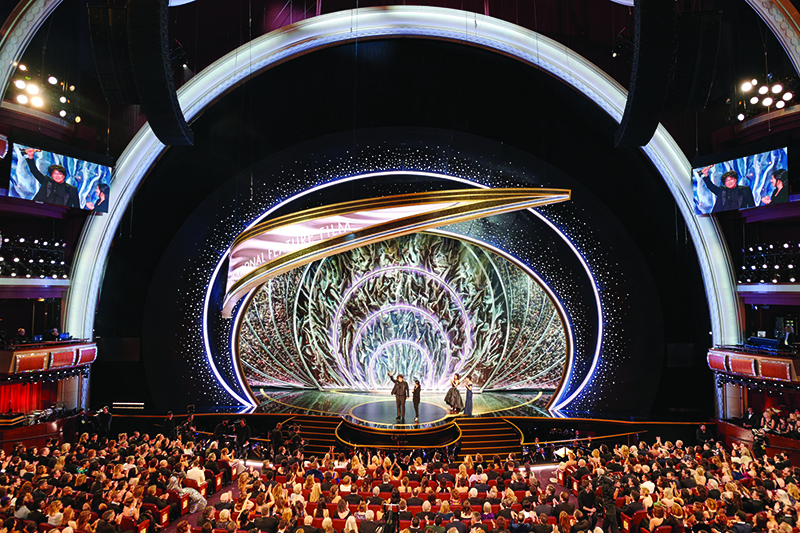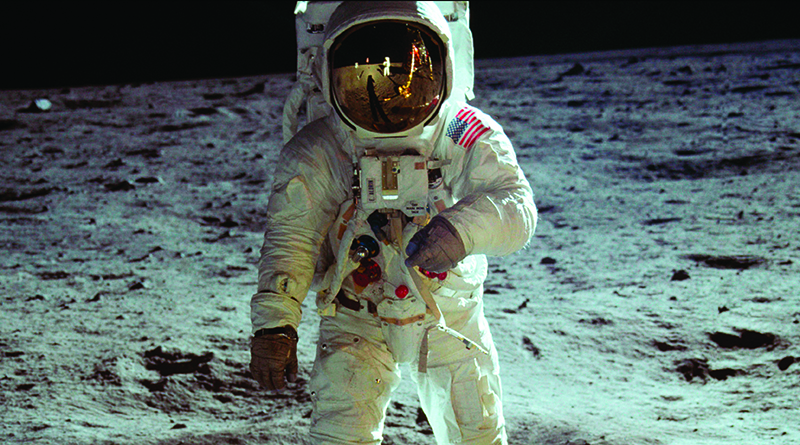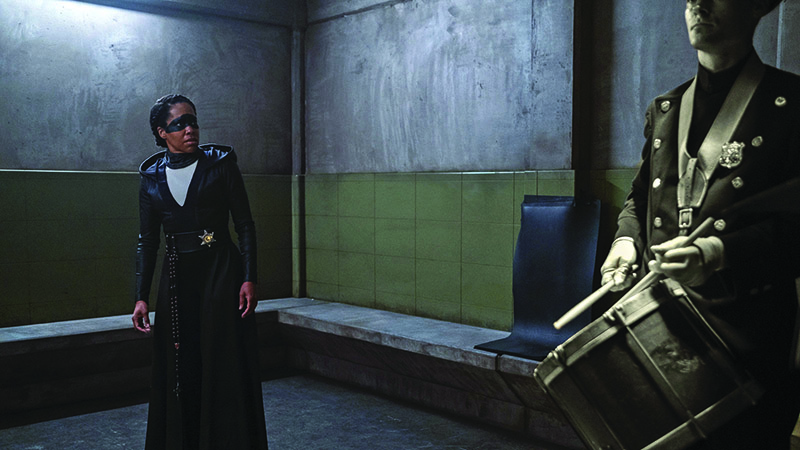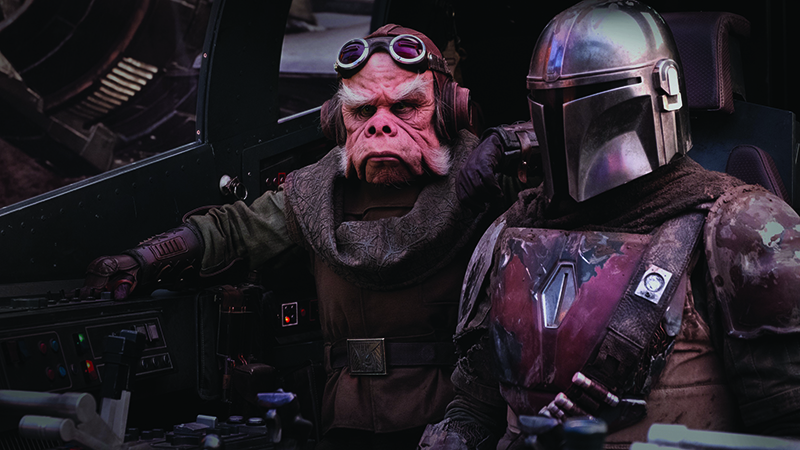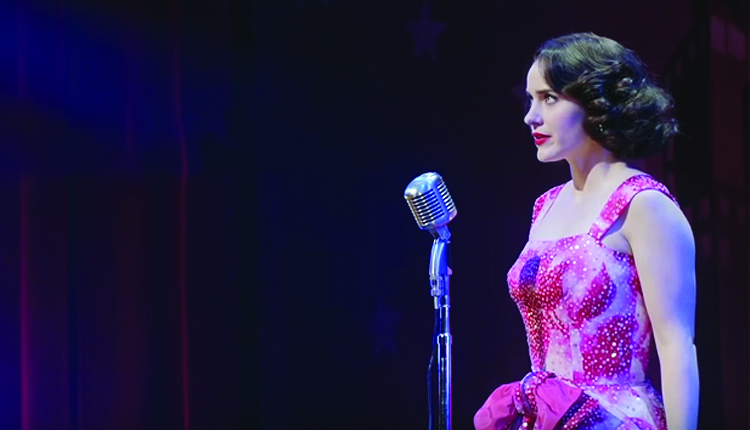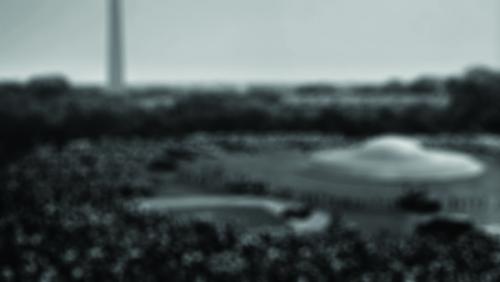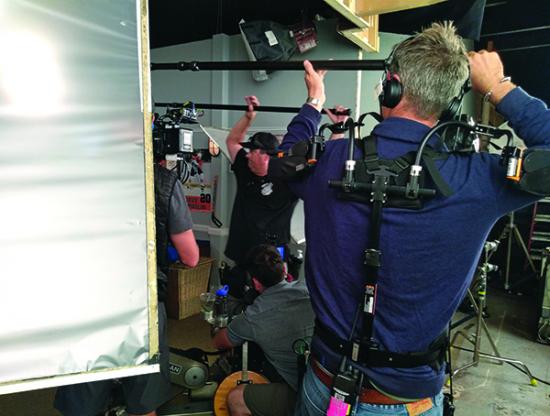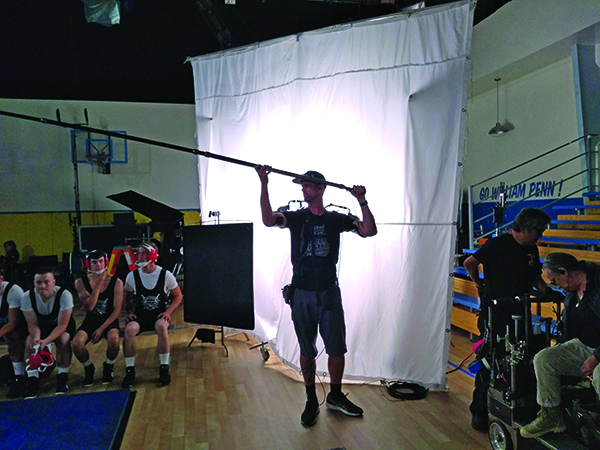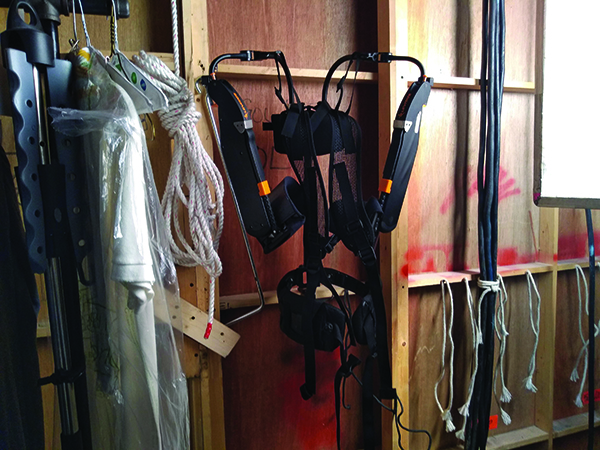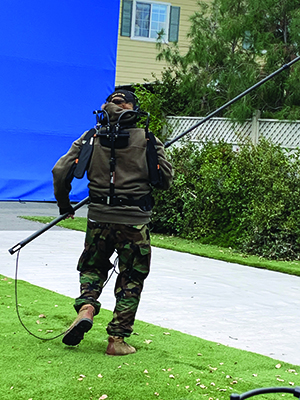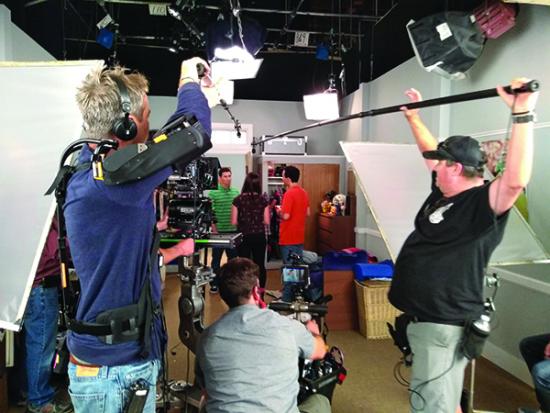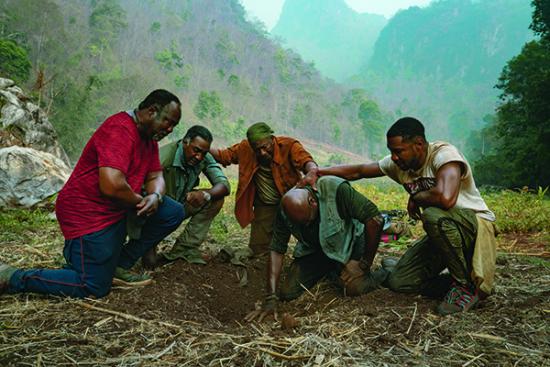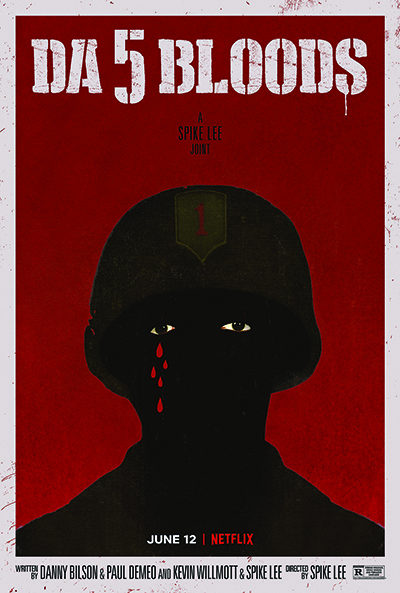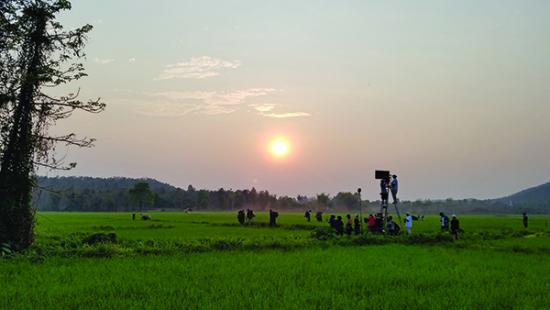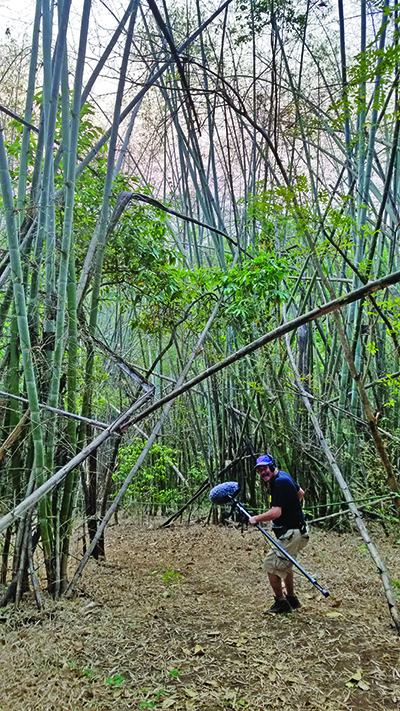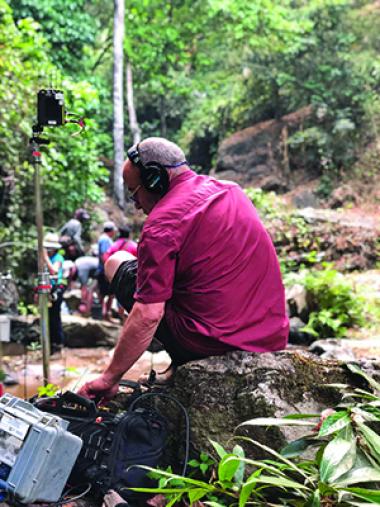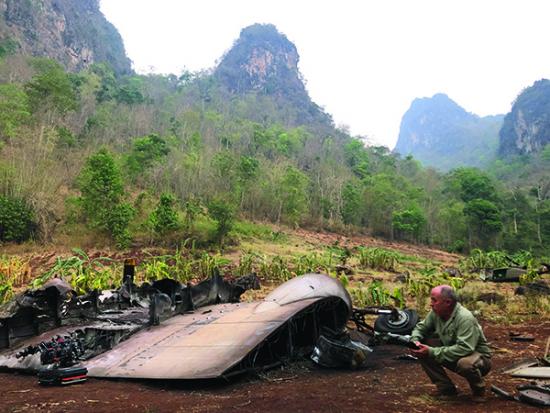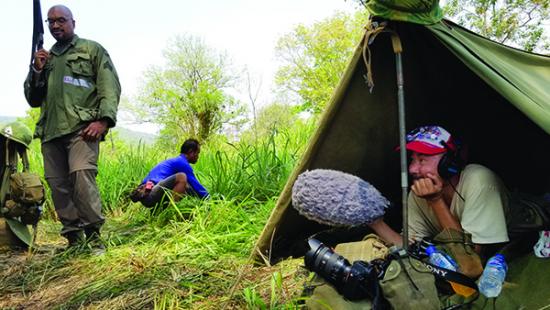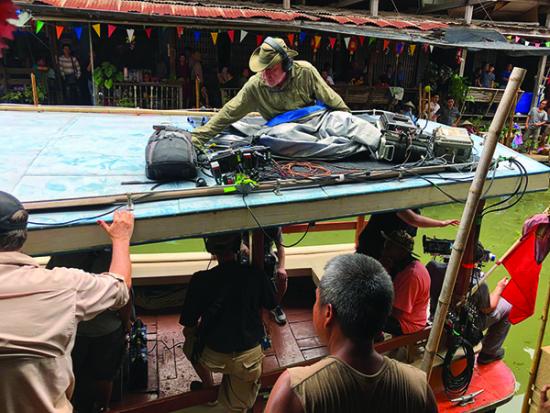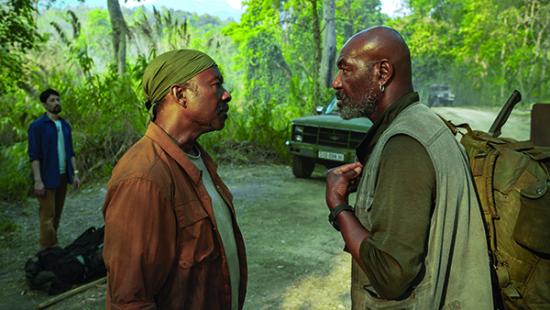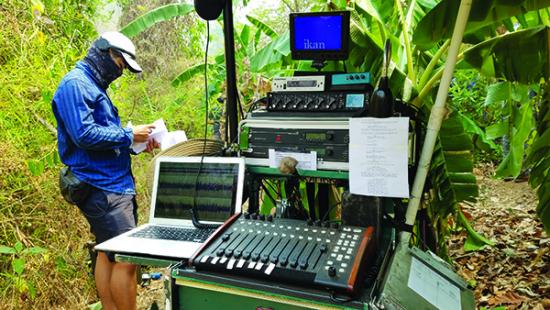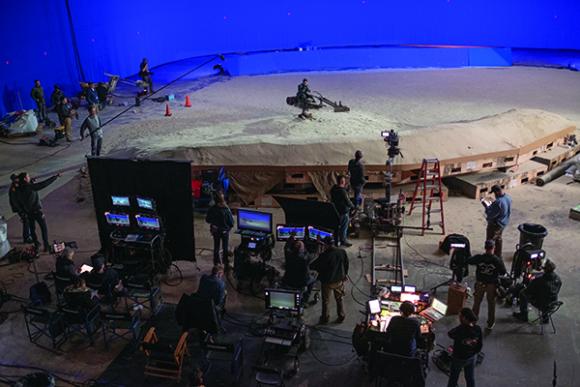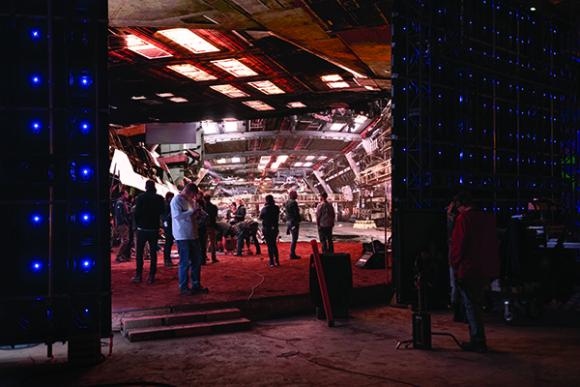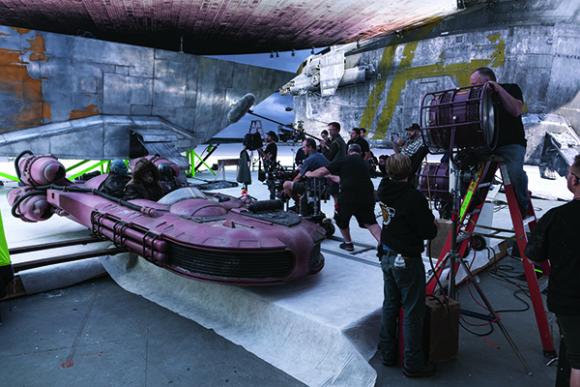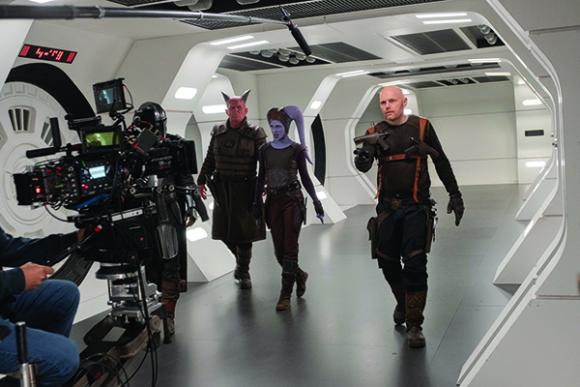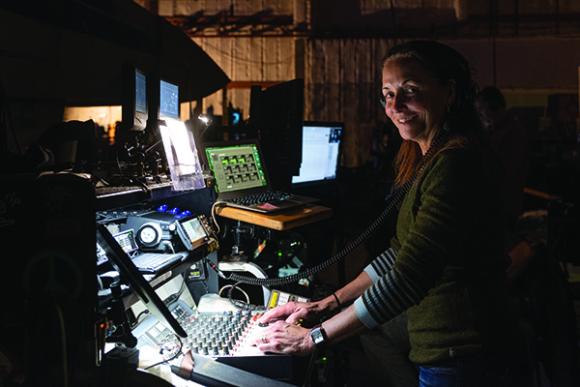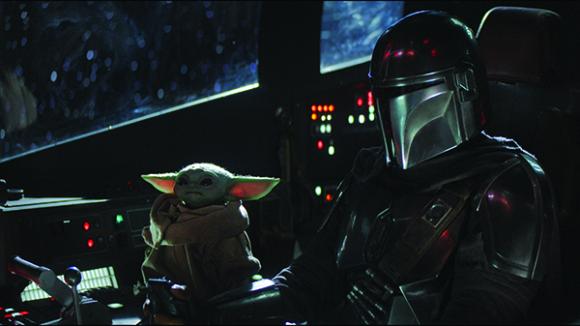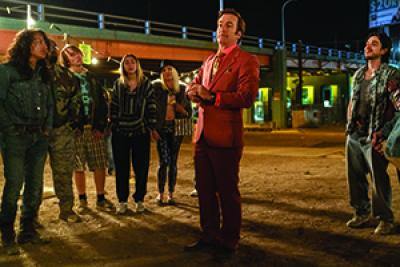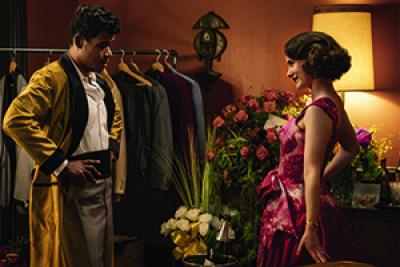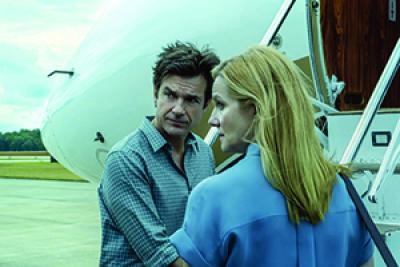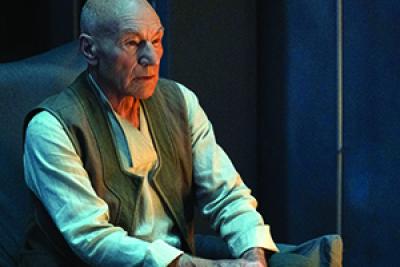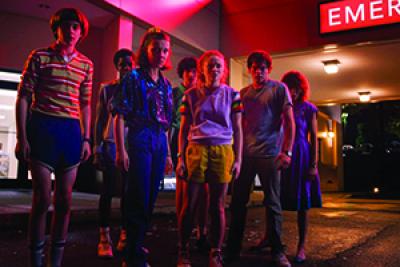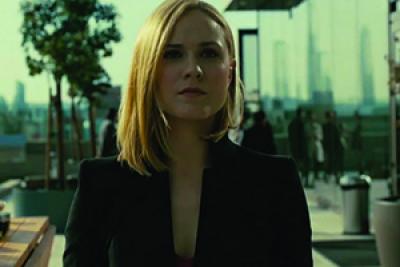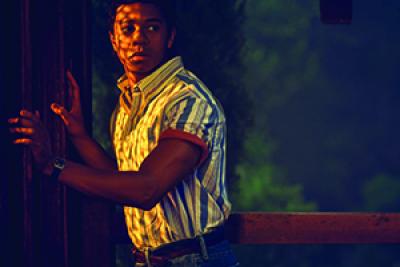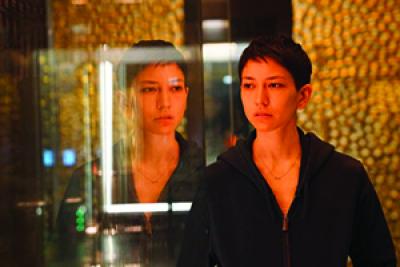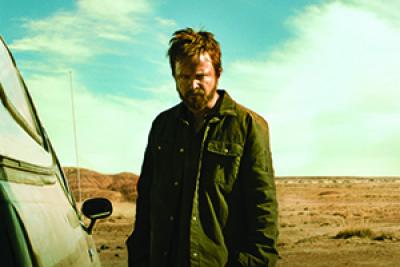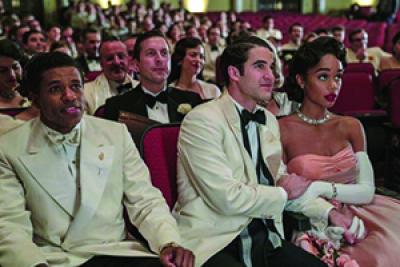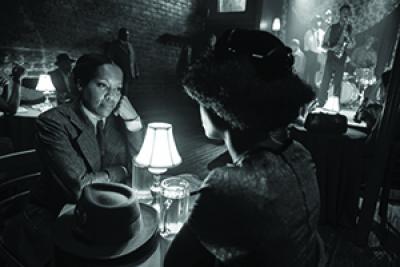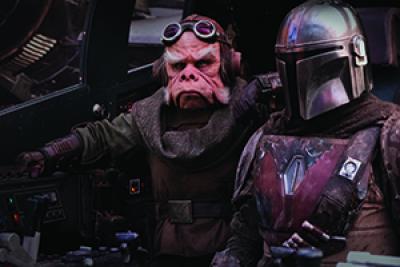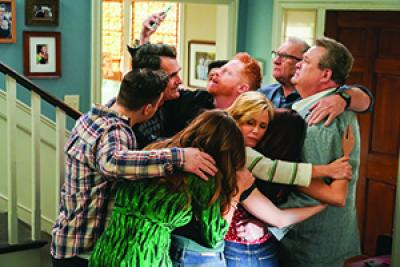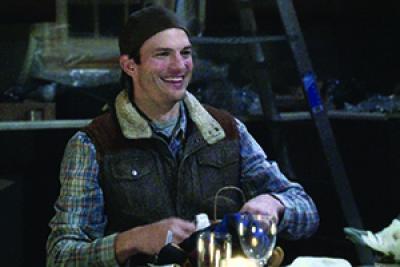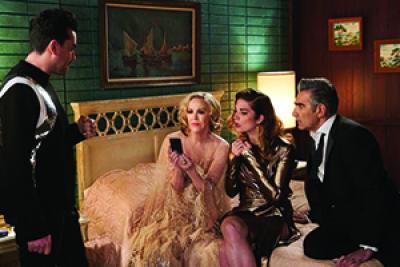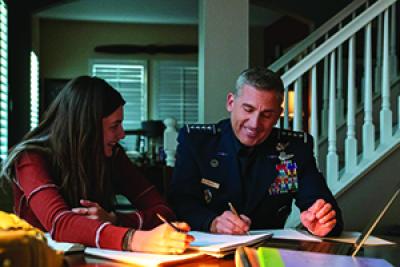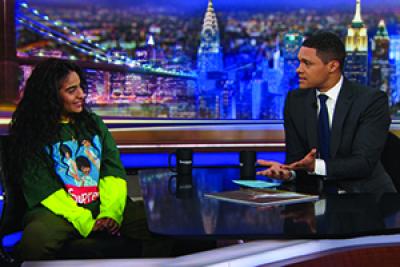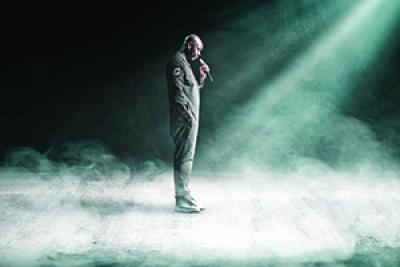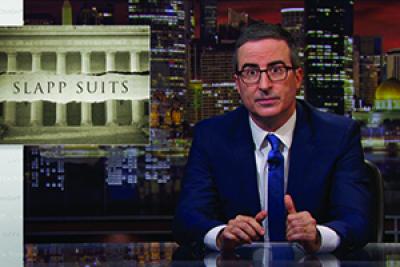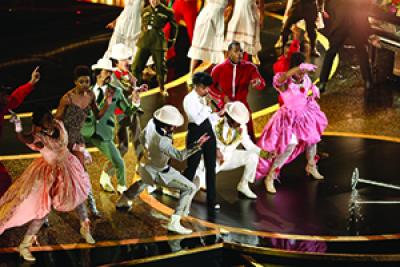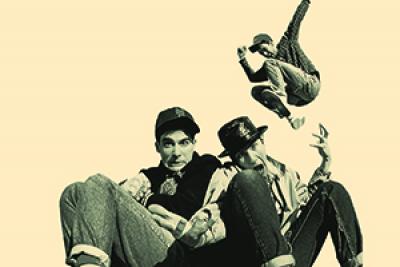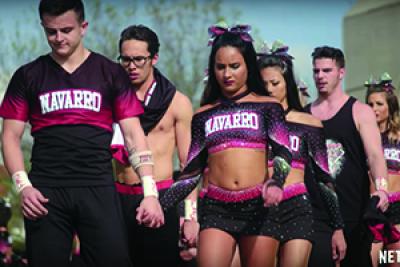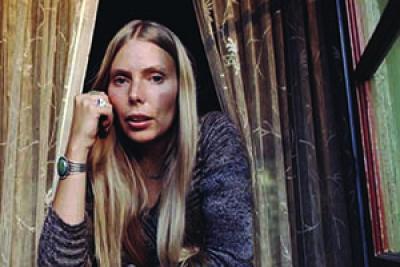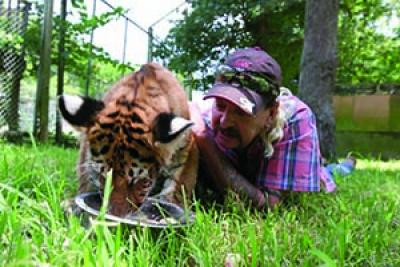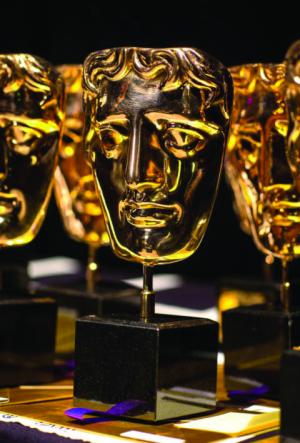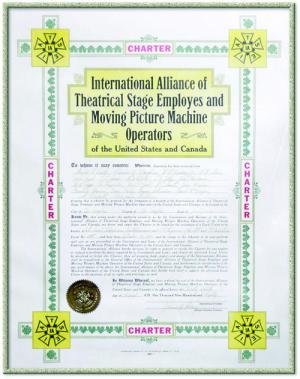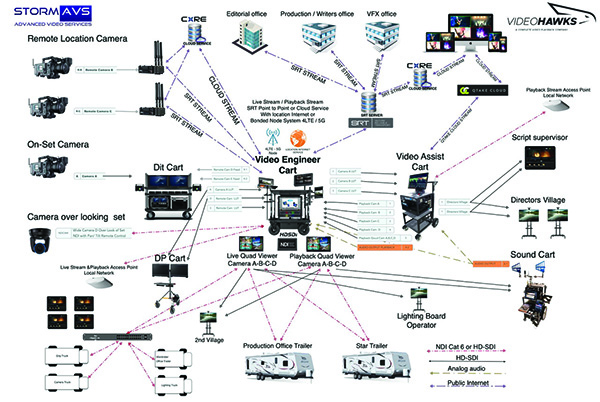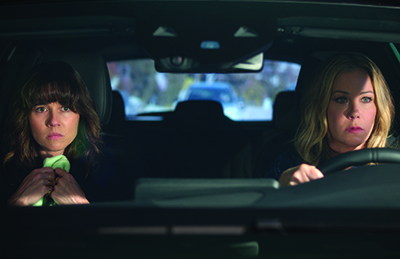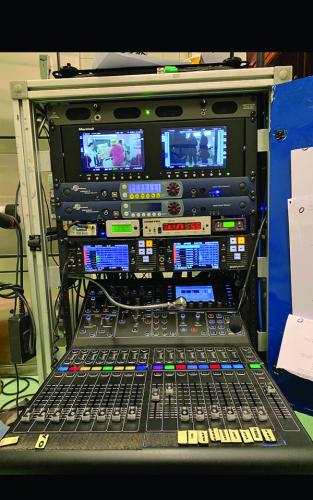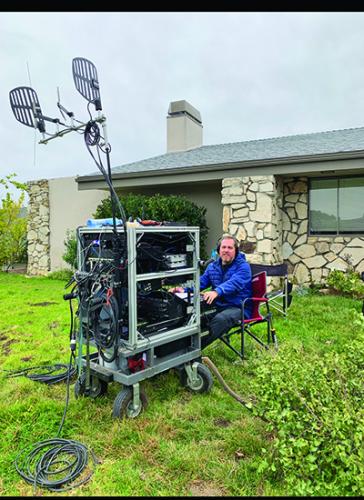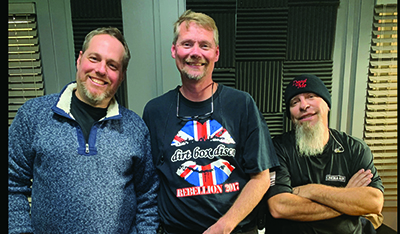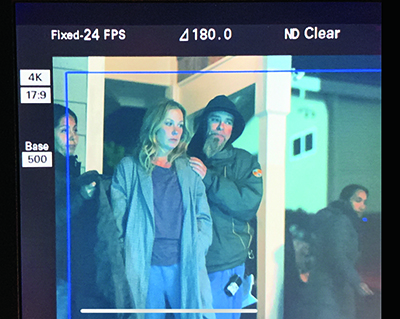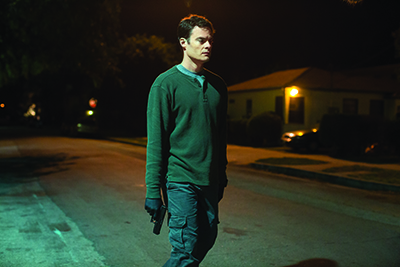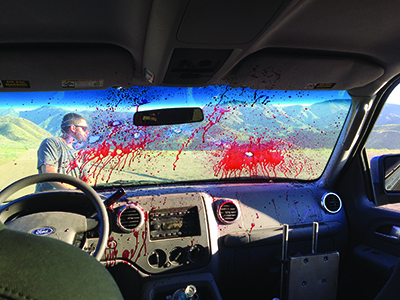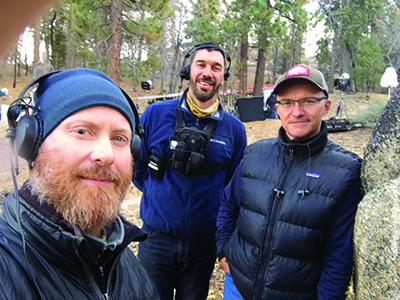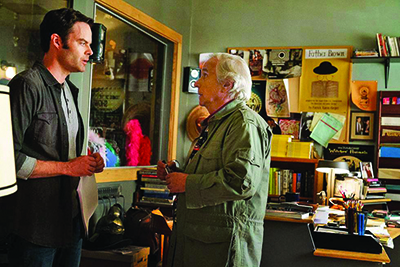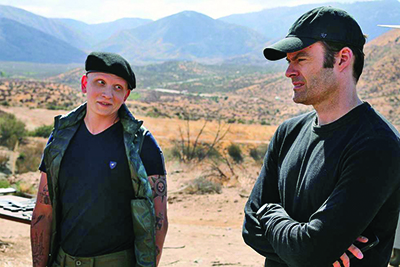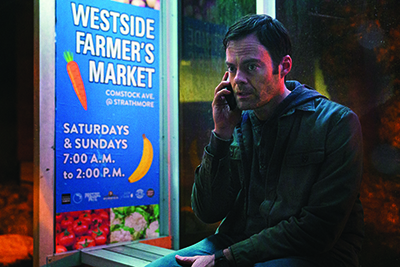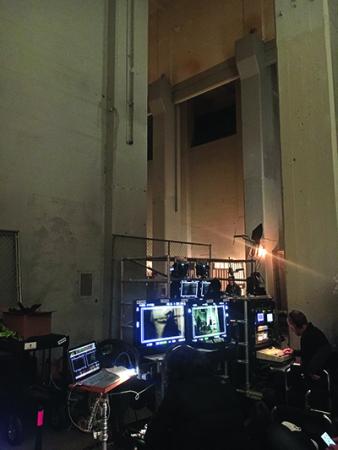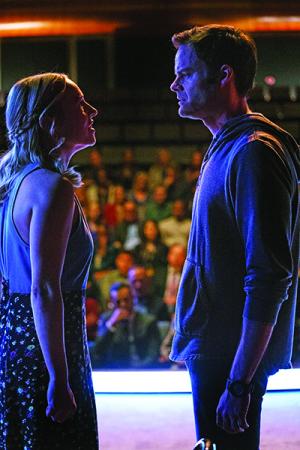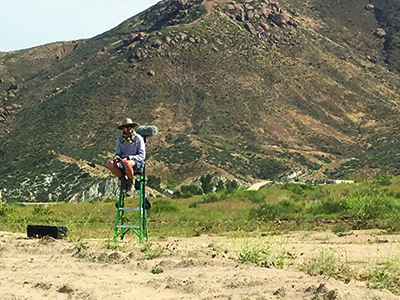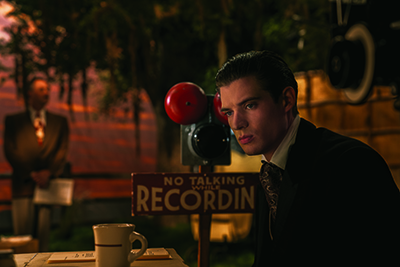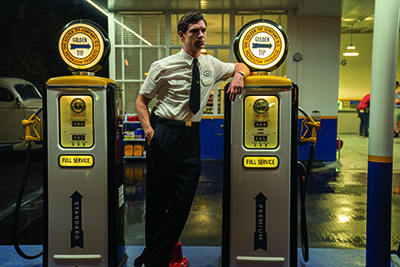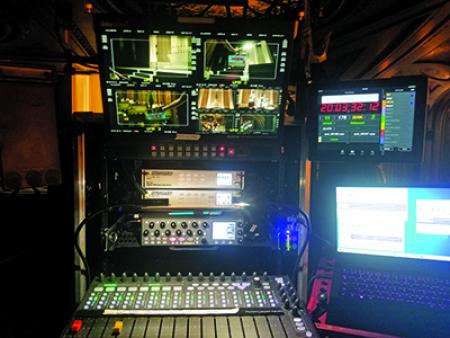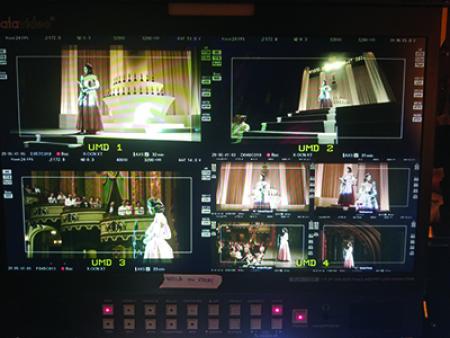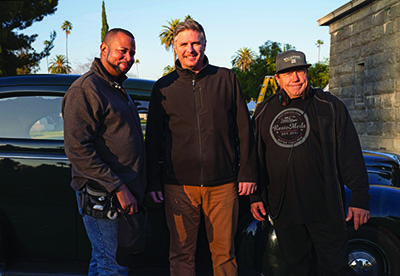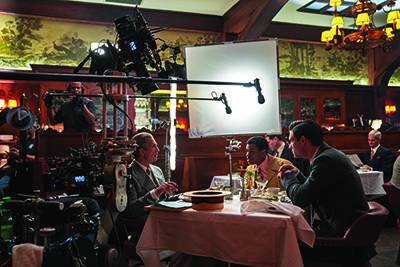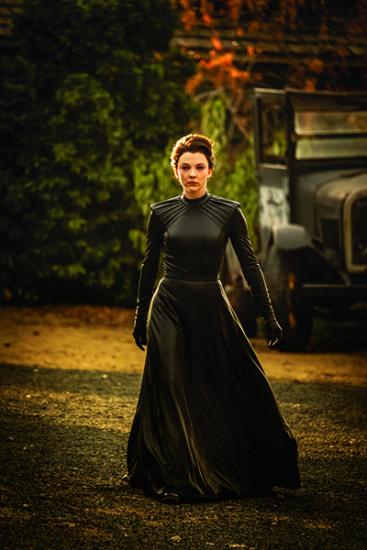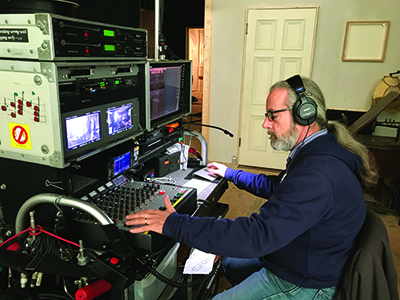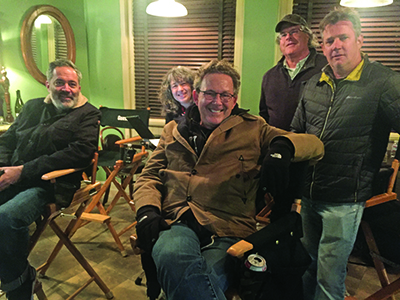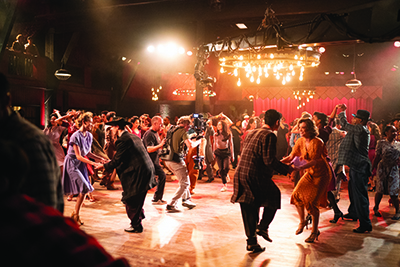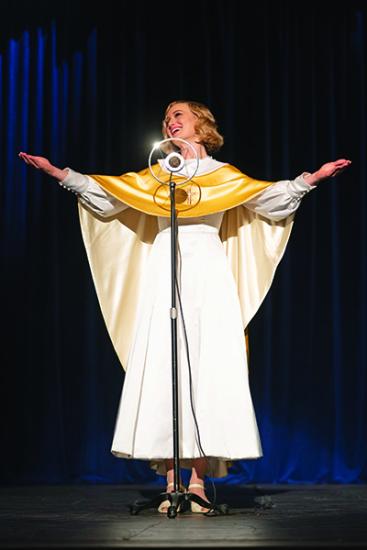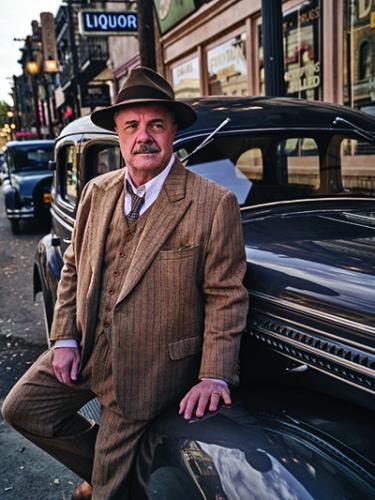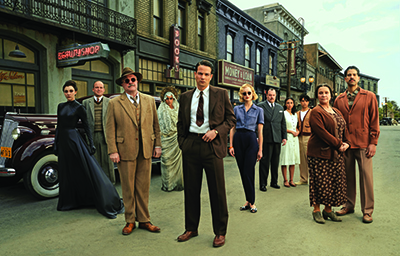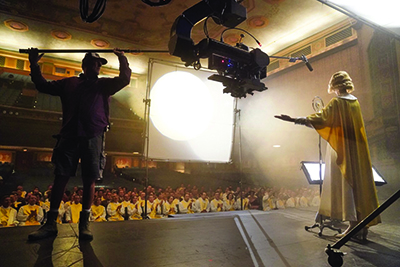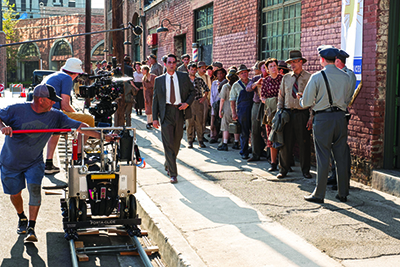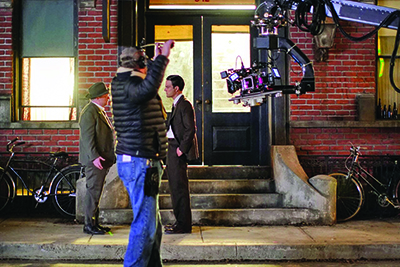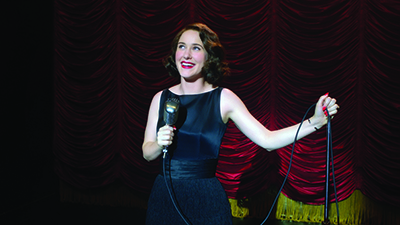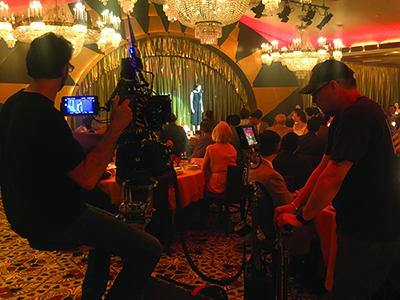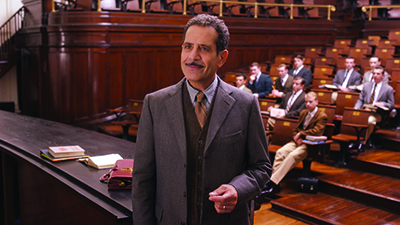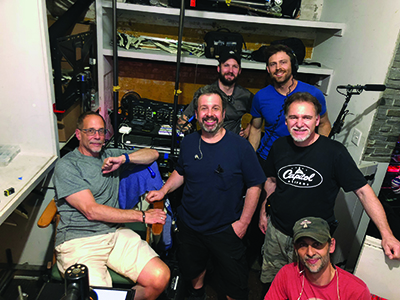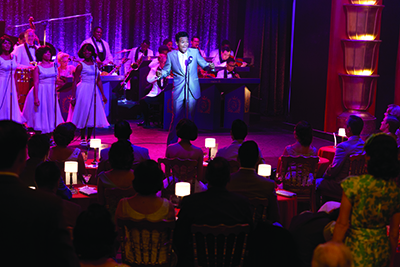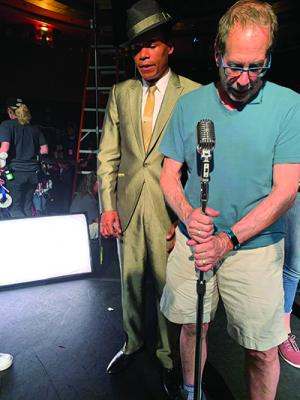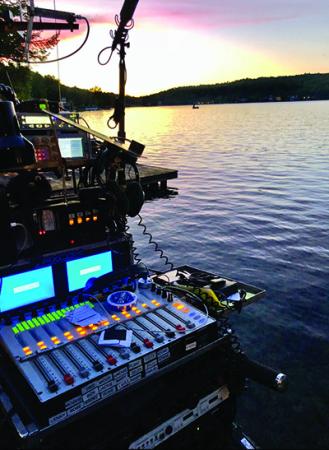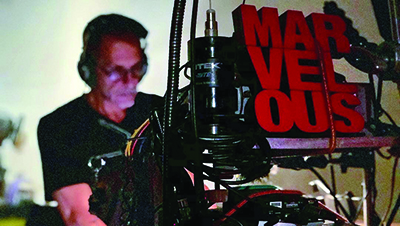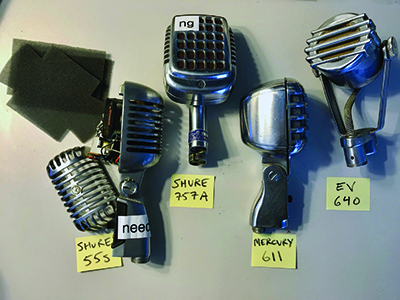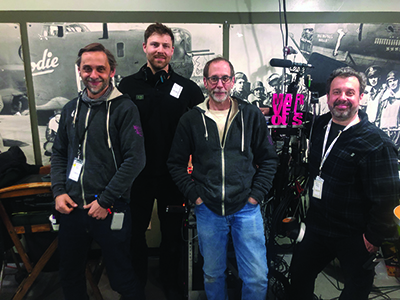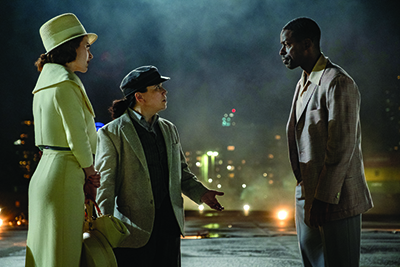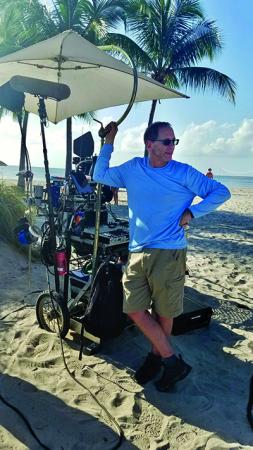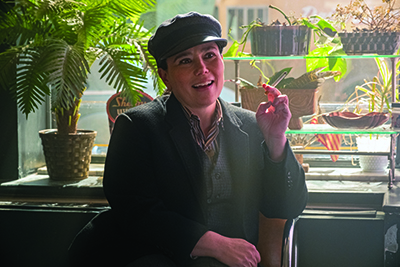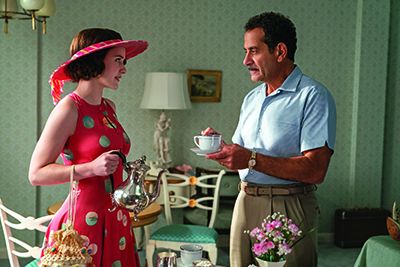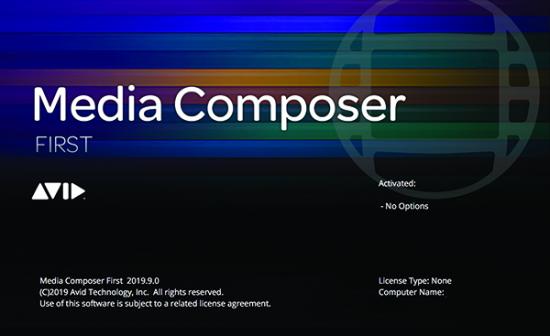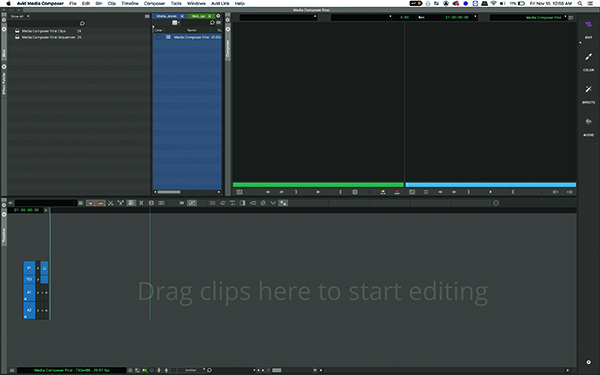LEADING BY EXAMPLE: Building Diversity in 695
by Steve Nelson CAS

In March of 2020, the world lurched into lockdown, trying and failing to get ahead of the pandemic caused by the SARS CoV-2 novel coronavirus, which, as you read this, has taken well over 250,000 lives in this country and more than a million worldwide. The entertainment industry, like most others, was at a standstill. Virtually all production shut down; no one anywhere was working, but your union leadership was very busy trying to figure out how best to serve the membership during this crisis. Dues reduction, how to continue healthcare coverage and pension benefits, and negotiations with AMPTP on how to get us safely back to work, all required our attention at that moment.
Late in May, in the midst of this global health crisis, thousands of people took to the street in sorrow and rage to protest the Minneapolis death-by-police of yet another unarmed Black person, George Floyd. It was one more in a long tragic line. After four hundred years, it seemed unlikely that one more could move the needle, but this was different. Caught on cellphone video, the world saw a killing that was more than shocking in its cold brutality. Even amidst the pandemic, so many people rose up in solidarity to be seen and heard in every major city, even in small towns with virtually no Black residents, and later throughout the world, in vociferous protest of the never-ending racial disparities, violence, and systemic oppression of people of color in the United States.
Many of our members here in Los Angeles joined the marches, as safely as possible, and our Local 695 Facebook page was boiling over. Where was our statement of solidarity with the Black Lives Matter led movement?
A group of Board members came together (virtually, of course) to craft a statement proclaiming our intention to stand with BLM. Should anyone think that it is a simple thing to put out such a statement, even if it seems so obvious and so right, then that person has likely not been in the position of representing a diverse group of almost 2,000 dues-paying individuals who don’t always agree with one another but are part of a larger and ever watchful organization in an industry where words count and actions have very real consequences.
The Local’s well-crafted and strong statement of support was timely enough to satisfy most of our members but nothing these days is without controversy. Some expressed their unhappiness with this statement; their feelings cannot be discounted.
Then the real question arose. What could we, as a union, actually do to support the goals of this essential movement? Making a “We stand with BLM” statement was necessary, but there is a fine line between meaningful support and mere lip-service; between acting as allies and gentrified “Black-washing.” After all, every corporate oppressor has a public relations department ready to create and publish a full-page statement of support in any newspaper, magazine, or online venue they like. What could we do to make a real difference?
At our next Board of Directors meeting, a new committee was proposed, eventually to be called the Committee on Equity, Diversity & Outreach. Our mission statement:
Recognizing the value in a diverse and inclusive community, the Local 695 ED&O committee works to create an environment where members of all cultural and socio-economic backgrounds can thrive. In the workplace, it focuses on improving access to mentorship and giving new members a chance to forge a career path for themselves.
It was decided that our first action would be a public event on Zoom, during which these issues would be discussed among our members. The proposal was met with resounding support and enthusiasm by the Board.
Beginning on June 23, the ED&O Committee met weekly for about two hours on Zoom. We started small, with just Board members and staff. Word got out and we quickly grew in size as dedicated and enthusiastic participants began to reflect and represent the diversity we seek.
Guests such as Veda Campbell, one of the first women of color to become a 695 mixer, would drop in to join the conversation and lend their unique perspective to the discussion. Without work to occupy their time, our members passionately dedicated themselves to the fight against inequity. This was really the place to be on a COVID Tuesday morning; everyone showed up ready to do the hard work and engage with these challenging and sometimes difficult issues. Our President, Business Agent, Field Reps, Officers, Trustees, and Board members were regular participants. The support given to this work by the Board and membership was so encouraging. As an institution, we are committed to positive and inclusive change.
We learned that Local 695 already has a powerful tool for change that has already been deployed. We have in our contract the Y-16A classification of Production Sound/Video Trainee, which allows for the hire of a person without roster status for training purposes. After thirty days of employment, they can join the Local, gain roster status, and all that comes with it. Some of you might be familiar with this and might have been beneficiaries of it. We have brought in several members this way and now it is being formalized as the Sound & Video Opportunity Program for Diversity & Inclusion. The development of this program is already in progress, with the Local partnering with community-based groups in Los Angeles to find and vet candidates and prepare them to begin on the path to a career they might never have considered. This mechanism can create potentially life-changing opportunities where there were none, increase diversity and equity in our Local and in our workplace, and demonstrate to our employers that there is a cost-efficient way for them to achieve their goals and increase productivity. At this time, we have placed five of the first seven candidates on shows going forward. Jamie Gambell and Ben Greaves have been the driving force behind the program since early last year, working with the Local to bring this to fruition, and it is already paying off. Looking forward, this will be a strong tool for change that could bring in an estimated twelve candidates per year. This ensures that our system and labor pool will not be overwhelmed or become oversaturated while ensuring quality candidates are given the opportunity to join our ranks. It should be understood that these trainees do not do the work of any other sound or video person; they work in addition to existing sound teams and their responsibilities are quite limited until they actually become members.
One of the most important aspects of this committee was the creation of a “safe space”—where we could openly discuss and explore solutions to the issues that brought us together, such as a lack of inclusion, inequity, and the mostly monochrome and male dominant nature of our Local and our workplace. These are not easy conversations but these are the issues of our time. There was a lot of learning in these meetings. Those coming from a place inside the dominant power group benefited from the honesty and patience of our members of color and women and progress has been made. In addition to the Trainee Program, the committee has begun development on a mentorship program that will allow members to partner up, informally, with folks who are further along in their careers and gain the benefits of their knowledge and experience. (This may be a slow start due to COVID restrictions.)

Crucial to the underrepresented being heard is organization. There is now a Black Sound & Video Caucus. Women, Latin-X, and our LGBTQ members are all coming together to be heard within our Local. To create change, you must have a seat at the table. We should be seeing more representation from these groups on our Board. On October 3, the Local followed up its public event with a virtual town hall chaired by Ronald Hairston Jr. This event— which was limited to Local 695 members, persons of color, women, and allies—acted as a venue to engage these issues in more depth than the original open forum allowed.
Meanwhile, work continued on the public livestream event “Diversity in Local 695: A Conversation.” The key to a great panel is a great moderator. It seemed obvious that this person should not be one of our own, and of course a person of color. On the list of potential moderators was Anna Everett, PhD, whose many accolades include professor emeritus of film and media studies at UC Santa Barbara; a scholar of Black film history; former Interim Vice Chancellor for Diversity Equity and Academic Policy; activist; and author of several books and innumerable articles. As an academic, she is a veteran of many panel discussions. As a friend of many years, I knew she would be perfect for this role. Still, it was quite a pleasant surprise when the Board passed over all the big industry names on the list to unanimously select Dr. Everett, who was honored and thrilled to accept the opportunity.
In addition to moderating the panel, which included a fair amount of prep to understand what we do, who we are, and the Y-16A Program (a major talking point), I tasked Dr. Everett with opening remarks in order to provide a broader historical context to frame the discussion. This she did brilliantly, drawing on her research to illuminate the importance of sound in Black cinema since the earliest days and to Black audiences. If you missed the livestream, you can view it here: http://www.local695.com/html/diversity.html
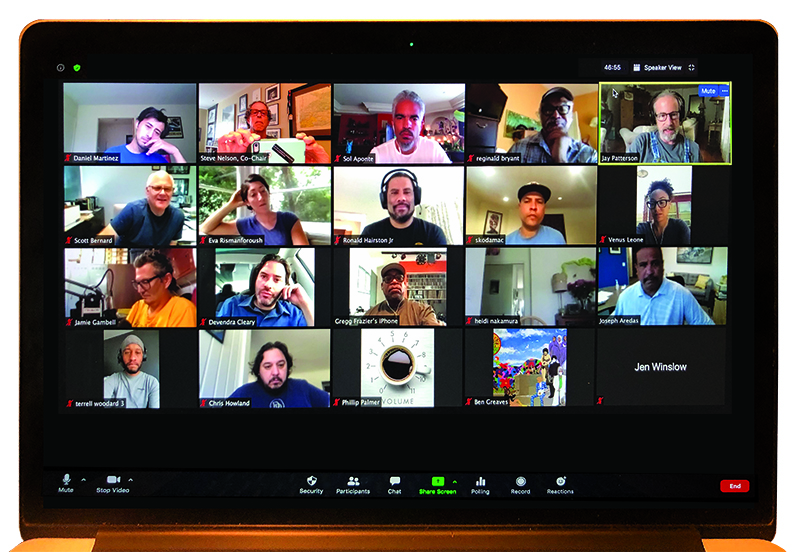
Diversity. That is a word with a lot of possibilities and subject to a great deal of misinterpretation, a word heavily freighted—especially these days. It is one of those buzzwords like “affirmative action,” “empower,” “identity politics,” “quota,” or “minority hire” that, while seeking to describe and remedy the baked-in inequities that permeate our world, have insinuated themselves into the conversation in a manner that serves to inflame and divide.
Nevertheless, this often-controversial word best describes our goal: to increase the heterogeneity of our membership and give voice to those usually unheard and unseen, and to show not only who we are, but who we aspire to be.
The composition of the panel would be critical for a successful discussion and to achieve the representation we’re seeking. It required the right balance of our members, professional people, engineers, and craftspeople at the intersection of race, gender, age/career trajectory, craft, and discipline/classification (so many Y-…’s!) And that is to say nothing of the people willing put themselves out there, in public, for what could be a challenging discussion on a sensitive subject. From what we’d learned in our meetings, we felt we could extend our safe space to include this panel and with the help of our experienced and gifted moderator, the conversation would flow.
We did well. A talented, accomplished, eloquent, and brave group representing who we are and what we do opened up about their unique histories, journeys, the challenges they’ve faced and continue to confront as people of color, as women, as professionals, younger, older, Black, Latin-X, Asian-American, Sound, and Video.
One of our panelists had joined via the Trainee Program and could speak to its benefits. We had only one Video Engineer on the panel and it is a major lapse that we had not one Projectionist. It is not easy to distill our essence into only seven little boxes on a Zoom screen!
The committee brought some thematically relevant questions to get the conversation started, which was facilitated in part by the hard work of Eva Rismanforoush and Jennifer Winslow. Dr. Everett skillfully worked the questions to facilitate a dynamic event that encouraged and modulated the flow of conversation to allow our panelists the opportunity to dig deep and bring out aspects of their lives and careers that would otherwise remain unseen. These experiences are essential for the rest of us to understand and appreciate as we move forward. If you missed the livestream, I strongly encourage you to take a couple hours and have a look. You may begin to see things in a different light, which is the first step toward the change we need. http://www.local695.com/html/diversity.html
Over one hundred sixty people registered to attend “Diversity in Local 695: A Conversation,” which took place the morning of Saturday, August 1. Most were 695 members, but there were many from outside, thanks to our publicity effort. This topic is high on the agenda of many organizations in our entertainment industry and most everywhere; I’m proud that we are taking the lead.
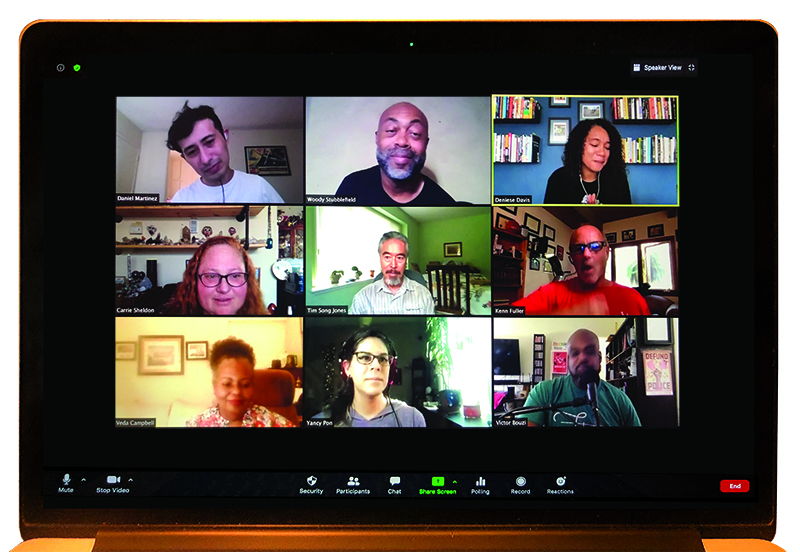
This groundbreaking event would not have been possible without the strong support of our Board of Directors, particularly President Mark Ulano and Business Agent Scott Bernard. Much gratitude to all who gave their time to do the work on ED&O for many weeks, to our guests who dropped in to share their experiences, their wisdom, and sometimes outrage. Laurence Abrams did a stellar job of making this a seamless Zoom experience; Vice President Jillian Arnold and Representative Heidi Nakamura expertly handled the Q&A. Much appreciation for our astute and talented moderator, Dr. Anna Everett, and especially to our panelists, consummate professionals all, who brought their wealth of experience to the proceedings. Thank you, Willie Burton, Susan Moore-Chong, Chauncy Godwin, Veronica Kahn, Anthony Ortiz, Doug Shamburger, and Yohannes Skoda for being such a stellar panel.
I’m well into my fourth decade as a Production Sound Mixer, lucky enough to work on some great projects with amazing and talented and brilliant people all over the world. I’ve spent more than a few years serving on the Board of Directors of this Local. This part of the journey has been perhaps the most exhilarating and rewarding ever. Like on a good show, there is the joy of working with a great team, new people, learning new ideas and techniques, meeting challenges, and that difficult-to-describe, very rare sensation of working on something much bigger and more important than oneself; feeling that it might make a difference. Open, supporting, dedicated, courteous, and respectful, together we created a safe space where we could go places I’d never been, where mistakes could be made without fear, and where progress was achieved. Where a more-than-middle-aged well-intentioned white man could blunder his way into becoming an ally and with some gentle but firm guidance, stay on the right path. We are living through a time like no other. Existential crises beset us from every direction. Predating all, sadly, is the matter of race in America. For four hundred years, race has always been the defining issue. From the days of colonialism to a bloody Civil War and through decades of Civil Rights Movements which have led to this very day, we have never achieved the American promise of equality for all. In spite of this, I am proud that, however belatedly, Local 695 is taking steps to address the systemic racism that has characterized our industry for more than a century.
